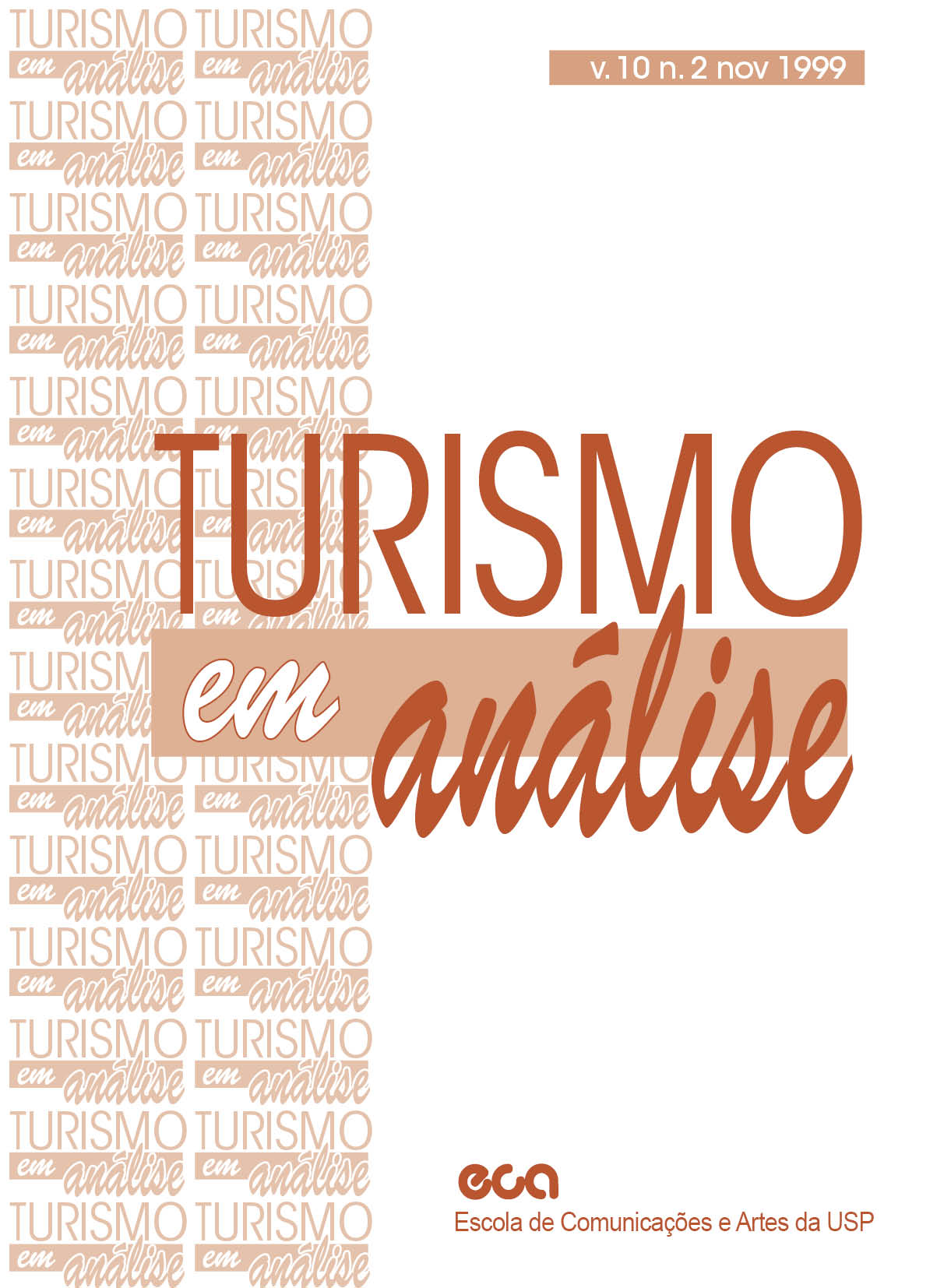Interpretación de fotografías aéreas en la planificación física-territorial del espacio turístico
DOI:
https://doi.org/10.11606/issn.1984-4867.v10i2p78-97Palabras clave:
planificación turística, espacio turístico, usos del suelo, interpretación de fotografías aéreas, tourism planning, tourist space, laned use, airphoto interpretation.Resumen
Considerando el enfoque sistémico del turismo se deduce que los elementos que lo conforman san de naturaleza distinta y pueden ser agrupados en dos categorías: aquellos que delimitan el espacio turístico y aquellos que lo califican. Dentro de la segunda categoría se encuentra "usos del suelo", a través del cual se muestra la distribución espacial de las funciones de la ciudad y cuyo registro actualizado es difícil de mantener debido a la dinámica de las áreas urbanas. En estas circunstancias el uso de fotografías aéreas es una buena alternativa en costa - eficiencia para la elaboración de estudios de diversa índole referidos al fenómeno turístico. Este artículo tiene como objetivo describir la técnica de la interpretación de fotografías aéreas, ventajas y desventajas, y los resultados de su aplicación en la actualización del plano de usos del sueto del área urbana del Municipio Maracaibo del Estado Zulia - Venezuela a través de la interpretación de un mosaico de fotos aéreas u ortofotomapa a escala 1:20.000, fundamental para el análisis físico-territorial y la calificación del espacio turístico en dicho Municipio.Descargas
Los datos de descarga aún no están disponibles.
Descargas
Publicado
1999-11-18
Número
Sección
Artículos
Licencia
Los autores conservan los derechos de autor y otorgan a la revista el derecho de primera publicación, con el trabajo simultáneamente licenciado bajo la Creative Commons Attribution-NonCommercial-ShareAlike 4.0 International (CC BY-NC-SA 4.0), lo que permite compartir el trabajo con el reconocimiento de su autoría y publicación inicial en RTA.
Cómo citar
CAMACARO, Leriz; MOTINA, Nixon. Interpretación de fotografías aéreas en la planificación física-territorial del espacio turístico. Revista Turismo em Análise, São Paulo, Brasil, v. 10, n. 2, p. 78–97, 1999. DOI: 10.11606/issn.1984-4867.v10i2p78-97. Disponível em: https://revistas.usp.br/rta/article/view/63483.. Acesso em: 14 mar. 2025.










